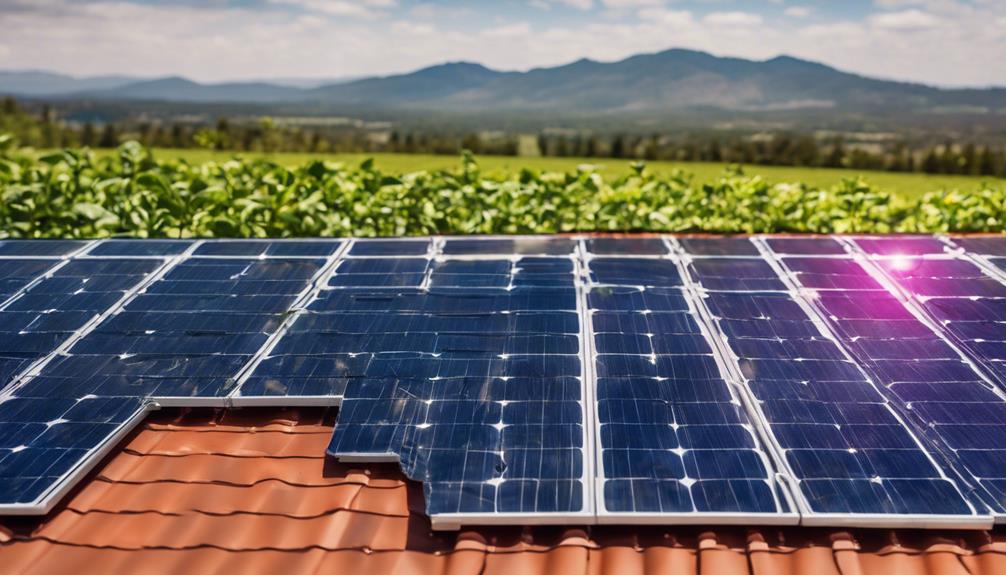
In the ever-evolving world of solar technology, monocrystalline panels have emerged as a leading choice for homeowners and businesses looking to harness the sun’s energy. This comprehensive guide will delve into what monocrystalline panels are, their benefits, applications, and considerations for anyone considering a solar energy investment.
What Are Monocrystalline Panels?
Monocrystalline panels are a type of solar photovoltaic (PV) panel made from a single crystal structure of silicon. This manufacturing process allows for higher efficiency rates compared to polycrystalline panels, which are made from multiple silicon crystals. The uniformity of monocrystalline silicon means that these panels can convert sunlight into electricity more effectively. Typically, you’ll find monocrystalline panels characterized by their dark black color and rounded edges. Understanding this fundamental aspect of solar technology is crucial for anyone interested in investing in solar energy solutions.
The Efficiency of Monocrystalline Panels
One of the most significant advantages of monocrystalline panels is their efficiency. These panels typically boast efficiency ratings between 15% and 22%, making them the most efficient option available on the market today. This high efficiency stems from the purity of the silicon used, which allows for better electron movement and, consequently, more electricity generation per square meter. For homeowners with limited roof space, this can be a game changer, as fewer panels may be required to meet energy needs, maximizing energy production in a compact area.
Cost-Effectiveness: Are Monocrystalline Panels Worth the Investment?
While the initial investment for monocrystalline panels is generally higher than for other types, such as polycrystalline or thin-film panels, the long-term savings on energy bills often justify the cost. Their efficiency leads to quicker payback periods. Additionally, many manufacturers offer lengthy warranties—typically 25 years—ensuring that your investment is protected over time. Therefore, when considering the overall cost-effectiveness of monocrystalline panels, it’s essential to factor in their longevity, efficiency, and the potential for increased property value due to sustainable upgrades.
Environmental Impact: A Sustainable Choice
In today’s eco-conscious society, the environmental impact of energy sources is a significant consideration. Monocrystalline panels are made from silicon, which is abundant in the earth’s crust. The production process has improved over the years, resulting in less waste and pollution. Furthermore, solar energy is a renewable source, meaning it can significantly reduce reliance on fossil fuels and lower greenhouse gas emissions. By opting for monocrystalline panels, homeowners and businesses contribute positively to the environment, making it a sustainable energy solution.
Installation and Maintenance of Monocrystalline Panels
The installation of monocrystalline panels should always be performed by certified professionals to ensure safety and compliance with local regulations. The installation process is relatively straightforward, typically taking just a few hours to a couple of days, depending on the system size. Once installed, maintenance is minimal. Regular cleaning to remove dirt, dust, and debris can enhance performance, especially in areas with heavy snowfall or dust accumulation. Most manufacturers recommend an annual inspection to ensure optimal function.
Comparing Monocrystalline Panels to Other Solar Technologies
When evaluating solar options, it’s crucial to compare monocrystalline panels with other types like polycrystalline and thin-film panels. Polycrystalline panels are generally less expensive and have a slightly lower efficiency, making them suitable for larger spaces. On the other hand, thin-film panels are lightweight and flexible, but they usually come with lower efficiency ratings. Each type has its place in the solar market, but for those prioritizing efficiency and space, monocrystalline panels often stand out as the superior choice.
Applications of Monocrystalline Panels in Various Settings
Monocrystalline panels are versatile and can be integrated into various applications, from residential rooftops to commercial solar farms. They are particularly popular in urban settings where space is limited, as their high efficiency allows for more energy production in a smaller footprint. Additionally, these panels are suitable for off-grid applications and electric vehicles, providing a sustainable energy source in remote areas. Their adaptability makes them a preferred choice for many solar energy projects.
Future Trends in Solar Technology: The Role of Monocrystalline Panels
As technology advances, the future of monocrystalline panels looks promising. Innovations in solar cell technology, such as bifacial panels that capture sunlight from both sides, are beginning to emerge. These advancements may further increase the efficiency and appeal of monocrystalline panels. Additionally, as global demand for renewable energy sources continues to rise, we can expect improvements in manufacturing processes, making these panels more affordable and accessible to a broader audience. Staying informed about these trends can help potential buyers make educated decisions about their solar investments.
In conclusion, monocrystalline panels represent a leading solution for anyone looking to invest in solar energy. With their high efficiency, long-term cost-effectiveness, and minimal environmental impact, they are an excellent choice for various applications. By understanding the benefits and considerations associated with these panels, homeowners and businesses can make informed decisions that align with their energy needs and sustainability goals. If you’re considering a solar energy investment, monocrystalline panels should be at the top of your list.





